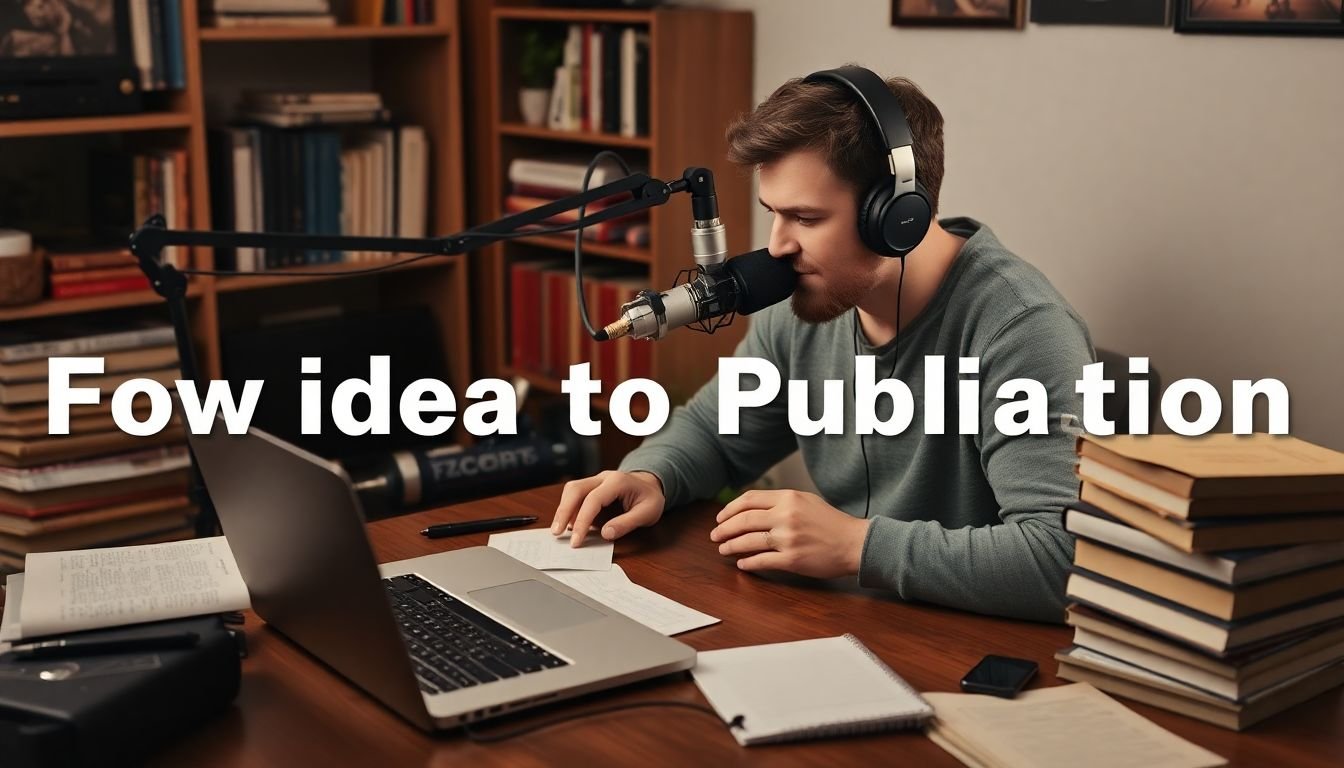
Table of Contents
Ever found yourself in the middle of a fascinating conversation, wishing you could bottle that energy and share it with the world? Or perhaps you’ve got a story to tell, a passion to ignite, or a cause to champion, and you’re wondering, ‘How can I reach more people with my voice?’ Welcome, dear aspiring podcaster, to the realm of audio content creation! You’re about to embark on an exciting journey, and this guide is your trusty companion, leading you from that initial spark of an idea all the way to the hallowed halls of iTunes, where millions of eager listeners await. But first, let’s address the elephant in the room: with over 2 million podcasts and counting, how can you ensure your voice stands out in the crowd? The answer lies in understanding the podcast landscape, mastering the art of audio content creation, and strategically navigating the publishing process. So, grab a comfy seat, and let’s dive in!
Agree: You’re not alone in feeling overwhelmed by the sheer number of podcasts out there. According to a 2021 study by Edison Research, 100 million Americans have listened to a podcast – that’s a whopping 37% of the U.S. population! With such a vast audience, it’s no surprise that the competition is fierce. But here’s the good news: this means there’s an equally vast appetite for new, engaging, and unique content.
Promise: By the end of this guide, you’ll have a solid understanding of the podcasting landscape, a clear roadmap for creating and launching your podcast, and the confidence to navigate the iTunes publishing process. We’ll demystify the jargon, provide practical tips, and share real-life examples to help you avoid common pitfalls. Whether you’re a seasoned speaker looking to expand your reach or a first-time podcaster with a story to tell, this guide promises to set you on the path to podcasting success.
Preview: In the following sections, we’ll explore the art of ideation, helping you refine your podcast concept and find your unique voice. We’ll delve into the technical aspects of audio content creation, from recording and editing to choosing the right equipment and software. Then, we’ll guide you through the strategic planning and preparation stages, ensuring your podcast is set up for success from day one. Finally, we’ll walk you through the iTunes publishing process, providing tips on optimizing your podcast’s visibility and maximizing your chances of reaching a wider audience. So, are you ready to turn that idea into an iTunes sensation? Let’s get started!
Mastering Podcast Launch, iTunes Publishing, and Audio Content Creation
Embarking on the journey of podcasting is like setting sail on a sea of sound, where every wave is a new episode, and every listener a fellow traveler. To navigate this vast ocean, one must first master the art of launching a podcast, which is akin to raising the sails and charting a course. This involves crafting a compelling concept, selecting the right equipment, and understanding the intricacies of audio content creation. Once you’ve set sail, the next port of call is iTunes publishing, the bustling harbor where millions of podcast enthusiasts gather. Here, you’ll learn to optimize your podcast’s metadata, create eye-catching artwork, and leverage iTunes’ algorithms to increase your visibility. But remember, a successful podcast is not just about reaching the masses; it’s about creating meaningful connections with your listeners. So, hoist the Jolly Roger of engaging content, and let the adventure begin!
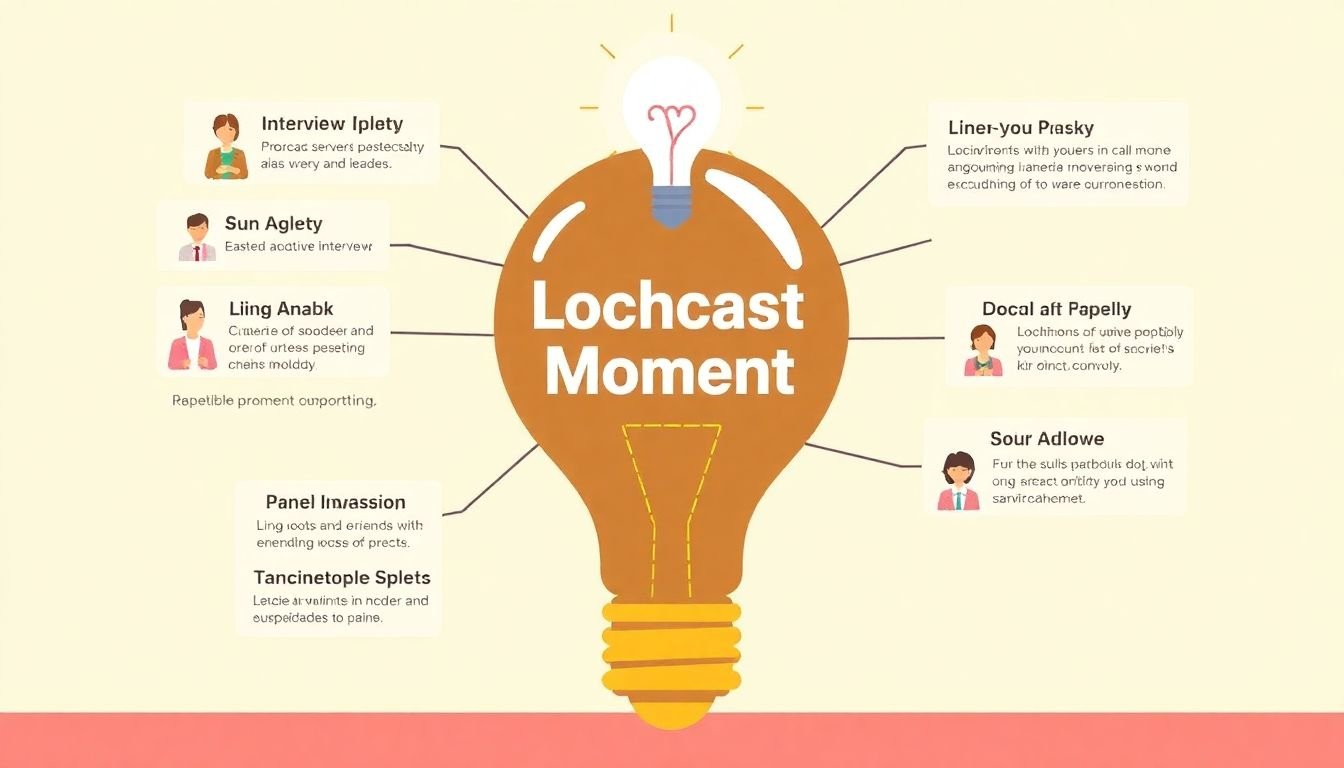
The Spark: Conceptualizing Your Podcast
Embarking on the podcasting journey begins with igniting that creative spark, conceptualizing your unique show. Let’s dive into the initial stages of bringing your podcast to life.
The first flicker of inspiration often comes from a passion or an idea you want to share. To kindle this spark into a roaring flame, brainstorm unique podcast ideas. Jot down every concept that comes to mind, no matter how outlandish or mundane. Remember, there’s a niche audience for every topic.
Once you’ve got a list of potential ideas, it’s time to identify your target audience. Who are the listeners you want to reach? What are their interests, demographics, and needs? Understanding your audience will help you tailor your content to resonate with them.
Next, define your podcast’s niche and format. Your niche is the specific corner of the podcasting world where your show will live. It could be true crime, comedy, self-help, or something entirely unique. The format, on the other hand, is how you’ll present your content. Will you have guests, co-hosts, or solo episodes? Will you follow a structured interview format or a conversational one?
Before you dive headfirst into production, it’s crucial to research your competition. Listen to podcasts in your niche to understand what’s already out there. This isn’t to discourage you but to help you find your unique angle. Identify gaps in the market that your podcast can fill. What can you offer that’s different or better?
Finding your unique angle is like finding your podcast’s superpower. It’s what will make your show stand out and attract listeners. It could be your unique perspective, your charismatic hosting style, or your innovative format. Whatever it is, let it shine through in every episode.
So, are you ready to take the first step? Let’s start with brainstorming those unique podcast ideas. Grab a pen and paper, and let the ideas flow. Your podcast’s journey begins here.
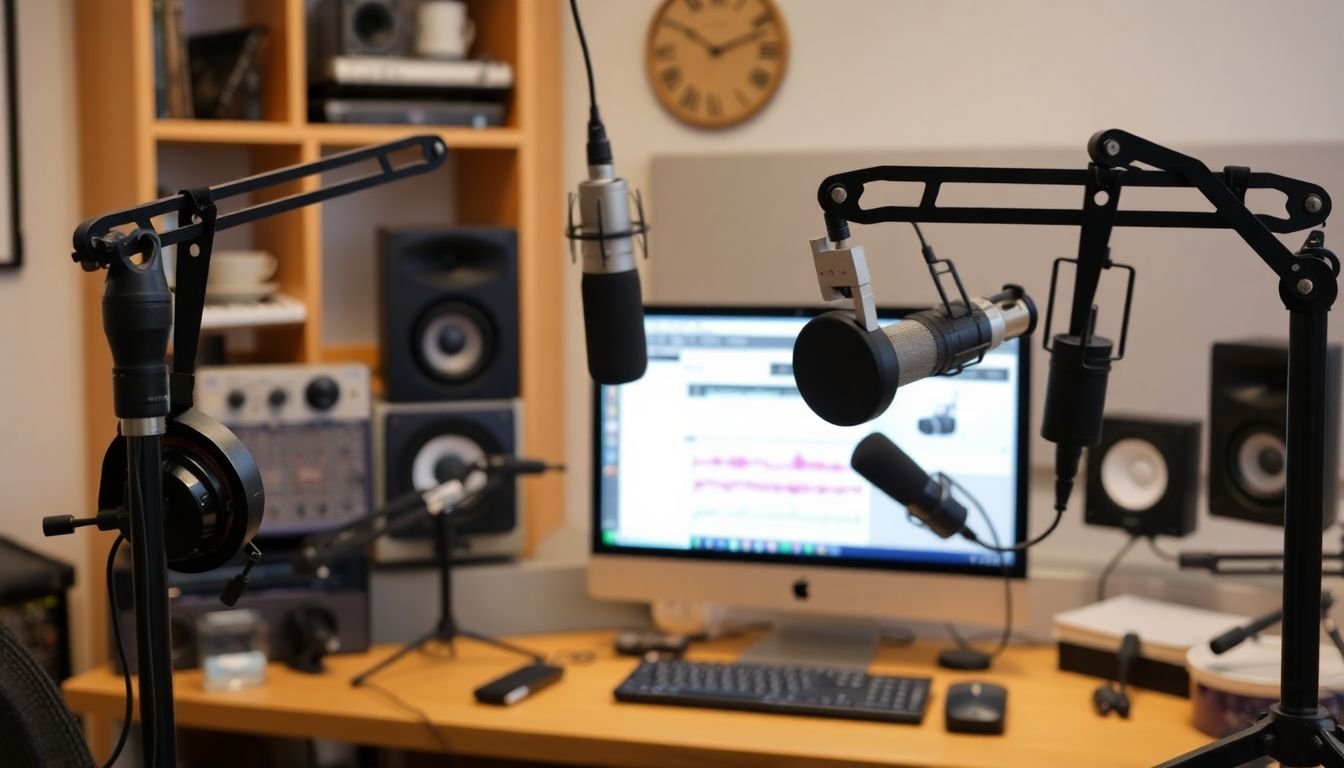
Equipment Essentials: Setting Up Your Podcast Studio
Embarking on your podcasting journey? Setting up your podcast studio is an exciting first step! A great podcast starts with great audio, so let’s dive into the essential equipment you’ll need to achieve that professional sound. Remember, you don’t need to break the bank to create high-quality content – we’ll focus on budget-friendly options too!
First things first: Microphones. This is your voice’s best friend. For beginners, dynamic microphones are a fantastic choice due to their durability and ability to handle high sound pressure levels. The Audio-Technica ATR2100 is a popular pick, offering excellent sound quality at an affordable price. If you’re on an even tighter budget, consider the Samson Q2U. Both are USB microphones, making them plug-and-play with your computer.
Next up, headphones. These are crucial for monitoring your audio and ensuring you’re not recording unwanted background noise. Any basic pair will do, but consider investing in a decent set for better sound quality. The Sony MDR-7506 offers great sound for a reasonable price.
Now, let’s talk audio interfaces. While not strictly necessary for USB microphones, they can significantly improve your audio quality by reducing background noise and offering better sound processing. The Focusrite Scarlett 2i2 is a fantastic entry-level interface, offering two microphone inputs and excellent sound quality.
Lastly, recording software. There are plenty of options out there, but Audacity is a fan favorite among beginners. It’s free, user-friendly, and offers all the tools you need to record, edit, and export your podcast.
Now, let’s talk about audio quality. Good audio is all about clarity and reducing background noise. Here are some tips to improve your audio on a budget:
- Invest in a pop filter to reduce plosive sounds (like ‘p’ and ‘b’).
- Use a microphone stand and shock mount to reduce vibrations and handling noise.
- Record in a quiet room, away from windows and other noise sources.
- Consider using a simple foam windscreen to reduce room echo.
Remember, great audio isn’t about expensive equipment, it’s about using what you have effectively. So, get creative, experiment, and most importantly, have fun! Your listeners will thank you for it.
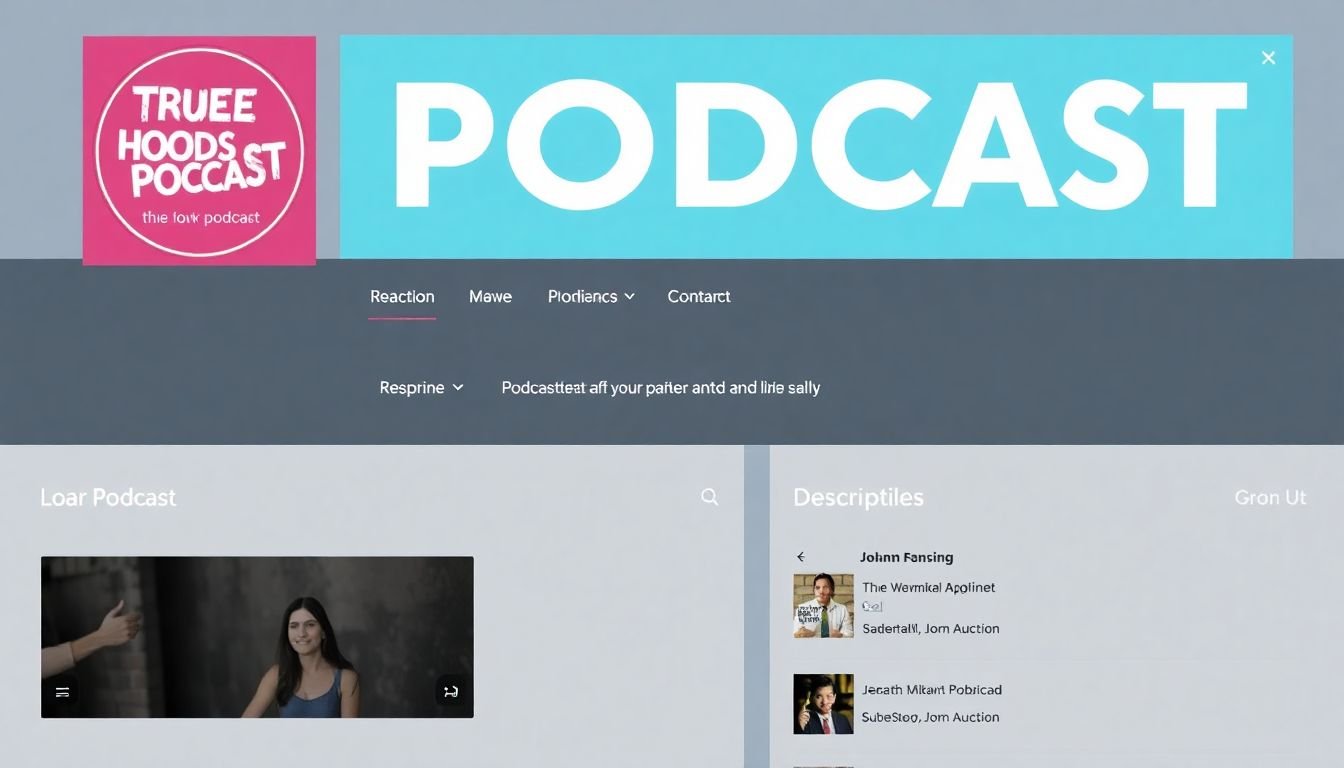
Crafting Your Podcast’s Identity: Branding and Formatting
Crafting Your Podcast’s Identity: Branding and Formatting
Creating a compelling podcast involves more than just great content. It’s about crafting an identity that resonates with your target audience. Let’s dive into the elements that make up this identity, starting with the first thing listeners encounter: your podcast’s title, description, and artwork.
Crafting a Compelling Title and Description:
-
Your title should be concise, memorable, and give listeners an idea of what to expect. It’s your podcast’s first impression, so make it count. Here are some steps:
- Keep it short and sweet, ideally under 100 characters.
- Use keywords that describe your podcast’s topic or theme.
- Avoid using numbers or special characters, as they can confuse search algorithms.
- Consider using a subtitle to provide more detail about your podcast’s focus.
- Start with a hook to grab the reader’s attention.
- Describe your podcast’s topic and format.
- Highlight what makes your podcast unique.
- End with a call to action, encouraging listeners to subscribe and share.
The description is your chance to elaborate on what listeners can expect. It should clearly communicate your podcast’s unique value proposition. Here’s a format you can follow:
Designing Engaging Artwork:
-
Your podcast’s artwork is like a visual title, giving listeners a sense of your show’s style and tone. Here are some tips:
- Use high-resolution images (at least 1400×1400 pixels) to ensure clarity on various platforms.
- Choose an image that represents your podcast’s theme or topic.
- Use a clean, easy-to-read font for any text.
- Consider using a consistent color scheme or style to build brand recognition.
Formatting Elements:
Formatting elements like intro/outro music, segment breaks, and show structure help guide listeners through your podcast and create a consistent listening experience.
Intro/Outro Music:
Intro music sets the tone for your podcast and gives listeners a sense of what’s to come. It should be engaging and reflective of your podcast’s style. Outro music signals the end of your podcast and can be used to encourage listeners to subscribe and leave reviews.
Segment Breaks:
If your podcast has segments, using consistent breaks can help listeners follow along. This could be a specific sound effect, a brief musical interlude, or a verbal cue from the host.
Show Structure:
The structure of your show should be consistent, allowing listeners to know what to expect each episode. This could be a specific format (like interview, storytelling, or panel discussion) or a consistent flow of segments (like news, features, and interviews).
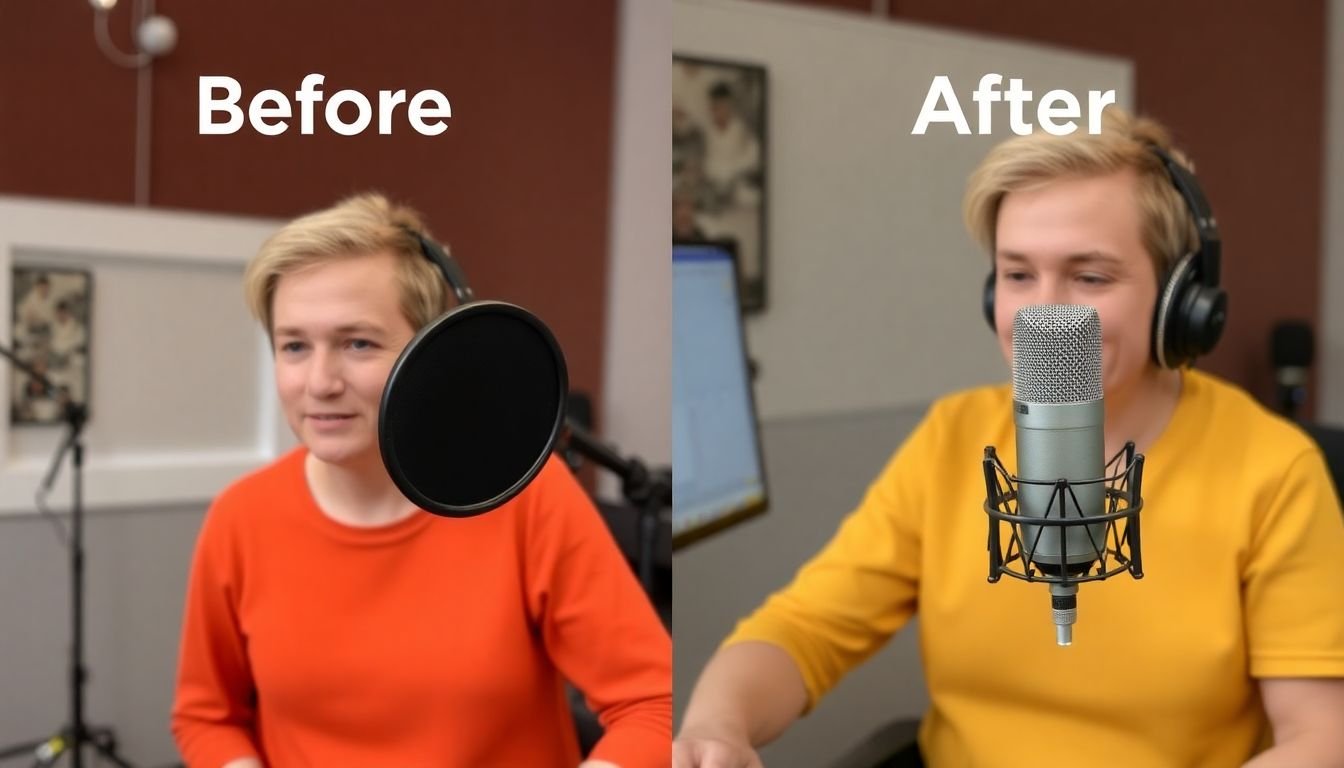
Recording and Editing: Capturing and Polishing Your Content
Embarking on your podcasting journey? Let’s dive into the exciting world of recording and editing, where you’ll capture your content and polish it to perfection!
Recording: Your Microphone’s Moment to Shine
Recording a podcast is like hosting a party in your ears. Here are some best practices to ensure your guests have a fantastic time:
-
Solo Shows:
- Find a quiet space, invest in a quality microphone, and ensure it’s positioned correctly – about 6 inches away from your mouth. Use headphones to monitor your audio and minimize echo by treating your room with blankets or foam.
Interviews:
- If your guest is in the same room, use a second microphone for them. If they’re remote, use a video conferencing tool that records high-quality audio.
Remote Guests:
- Ask your guests to record in a quiet space, use headphones, and test their audio before starting. Encourage them to use a quality microphone if possible.
Editing: Turning Good into Great
Once you’ve captured your content, it’s time to slip on your editing gloves and work your magic!
Enhance Audio Quality:
- Use noise reduction tools to minimize background noise. Compress your audio to even out volumes and add EQ to boost or cut specific frequencies.
Remove Mistakes:
- Don’t be afraid to cut out ‘ums’, ‘ahs’, and awkward silences. Your listeners will thank you!
Add Transitions and Effects:
Smoothly move between segments with transitions, and add effects like music or sound bites to enhance your content. Just remember, less is often more.
With these recording and editing tips, you’ll be well on your way to creating polished, engaging podcast episodes that’ll have your listeners hitting ‘subscribe’ and ‘play’ again and again!
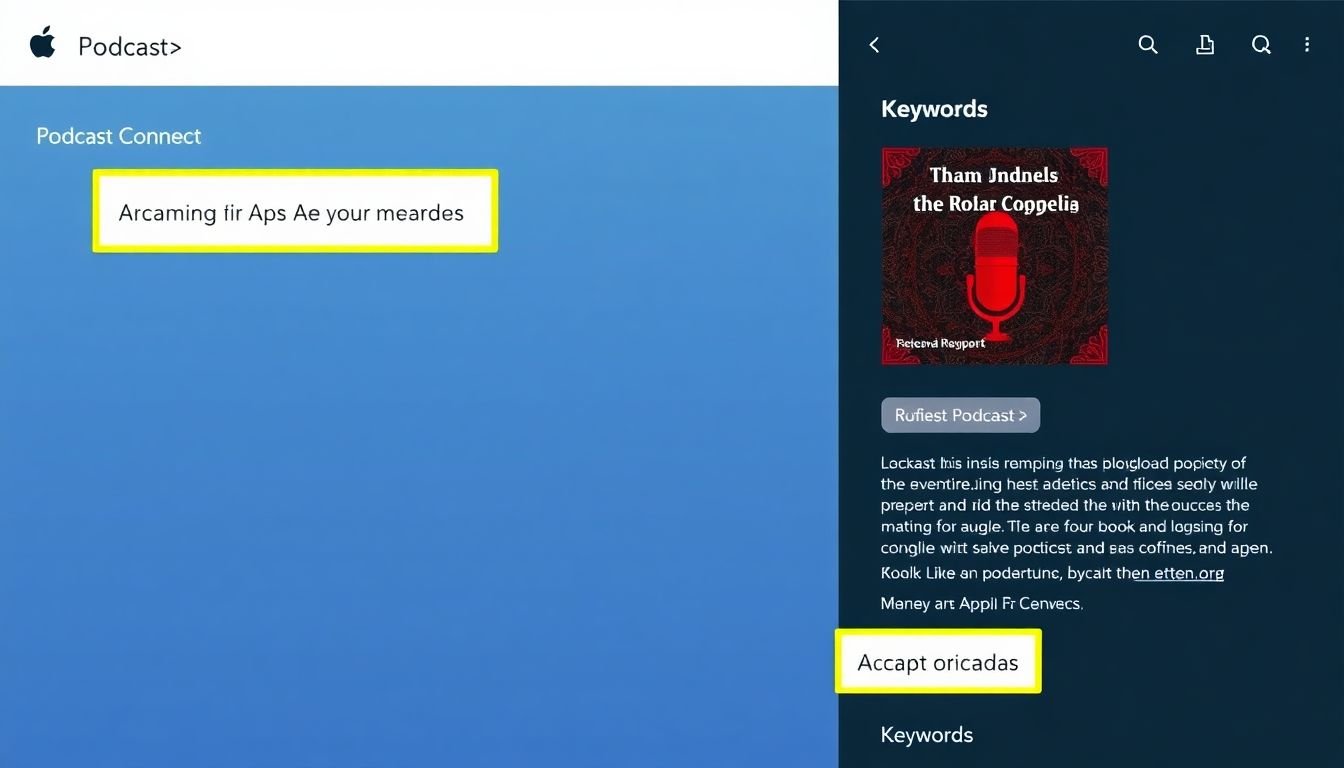
Mastering iTunes Publishing: Optimizing Your Podcast’s Visibility
Embarking on the journey to master iTunes publishing for your podcast involves a series of strategic steps that can significantly enhance your show’s visibility. Let’s dive into a comprehensive guide that will walk you through the process of submitting and optimizing your podcast on iTunes. First and foremost, you’ll need to create an Apple Podcasts Connect account. This platform serves as the hub for managing your podcasts on Apple’s ecosystem. To set one up, simply visit the Apple Podcasts Connect website and sign in with your Apple ID. If you don’t have one, you can create a new account. Once logged in, click on the ‘+’ icon to add a new podcast.
Now that you’re in, it’s time to fill out the metadata for your podcast. Metadata is essentially the information that describes your podcast, making it easier for listeners to find and understand what your show is about. Here’s a breakdown of the key fields you’ll need to fill out:
- Title: Keep it concise, descriptive, and under 230 characters.
- Description: Provide a detailed overview of your podcast. You have up to 4000 characters to work with, but remember, the first 100-150 characters are the most crucial as they’ll be visible in search results.
- Author: This is typically the name of the podcast host or the production company.
- Email: A contact email for listeners to reach out to you.
- Language: The language your podcast is in.
- Explicit: Check this box if your podcast contains explicit content.
After you’ve filled out the basics, it’s time to delve into the nitty-gritty of optimization. Apple Podcasts uses keywords and categories to help listeners find your show. Here’s how to make the most of these features:
- Keywords: Apple Podcasts uses keywords to match your podcast with listener searches. You have up to 300 characters to include relevant keywords, so choose wisely. Think about what terms your target audience might use to find a podcast like yours.
- Categories: Apple Podcasts offers a range of categories to help listeners find podcasts that align with their interests. You can choose up to three categories for your podcast. Be strategic with your choices; consider your show’s content and who your target audience is.
Once you’ve filled out all the necessary information and optimized your podcast’s metadata, it’s time to submit your RSS feed. This is how Apple Podcasts will access your podcast’s content. You can generate an RSS feed using various podcast hosting platforms. After generating your feed, paste the URL into the ‘Feed URL’ field in Apple Podcasts Connect and click ‘Validate’. If everything is in order, click ‘Submit’ to finalize your podcast’s listing on Apple Podcasts.
And there you have it! You’ve successfully submitted and optimized your podcast on iTunes. Remember, optimizing your podcast’s visibility is an ongoing process. Regularly review and update your metadata to ensure it remains relevant and engaging. Happy podcasting!
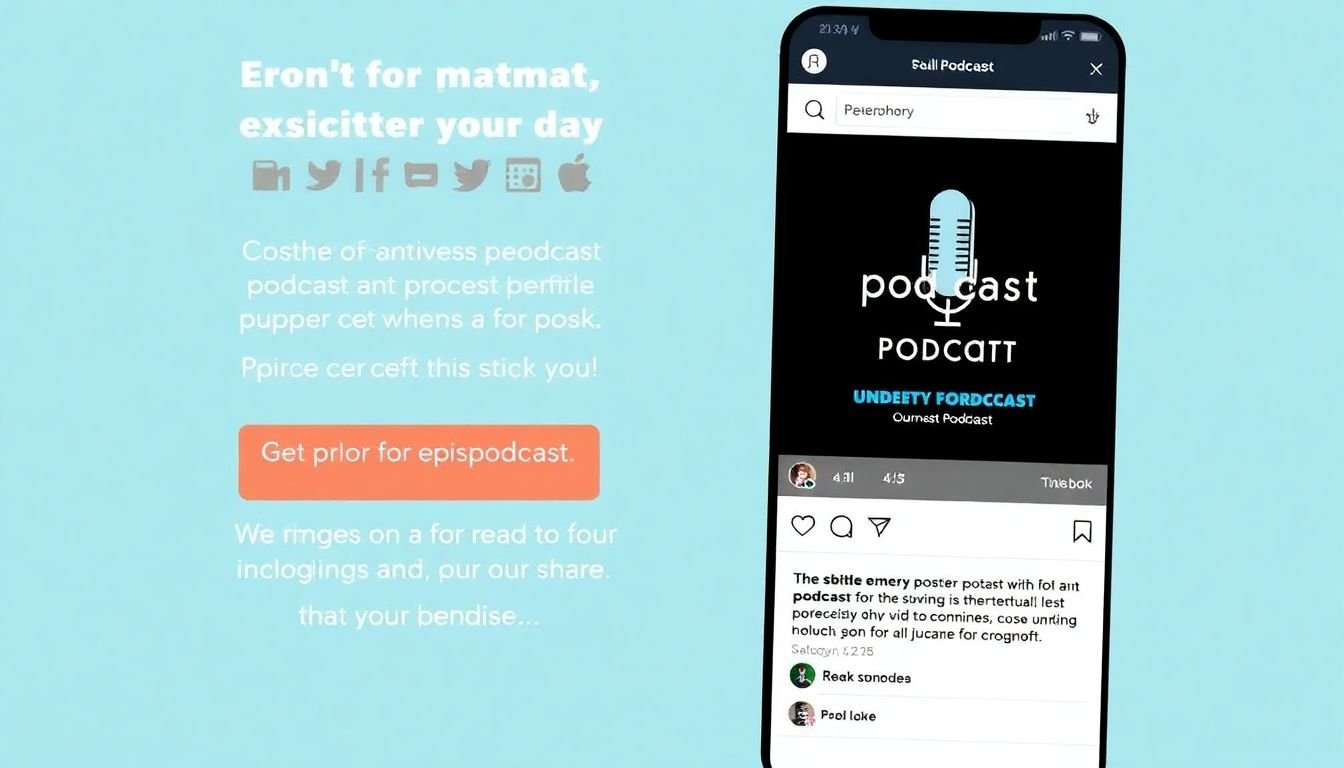
Building an Audience: Marketing Your Podcast
Building an audience for your podcast is a journey that requires strategic planning and consistent effort. Marketing your podcast effectively is key to reaching new listeners and growing your fan base. Let’s delve into various marketing strategies that can help you achieve this goal.
Social media promotion is a powerful tool in today’s digital age. Platforms like Twitter, Instagram, and Facebook can help you reach a wide audience. Regularly post engaging content related to your podcast, such as snippets of episodes, behind-the-scenes looks, or thought-provoking questions to encourage listener interaction. Hashtags can also help increase your visibility. For instance, using #Podcast or #PodcastLovers can connect you with a larger community.
Guest appearances and collaborations can significantly boost your podcast’s reach. Invite influential guests from your niche to appear on your show. Their presence can attract their followers to your podcast. Similarly, appearing as a guest on other podcasts can expose your content to a new audience. Collaborations with other podcasters or influencers can also create synergies that benefit both parties.
Email marketing is another effective strategy. Build an email list by offering incentives like exclusive content or early access to new episodes. Regular newsletters can keep your listeners engaged and informed about your podcast’s developments. Remember to make your emails personal and valuable to avoid being marked as spam.
Consistent branding is crucial for your podcast’s success. Ensure your podcast’s name, logo, and artwork are consistently used across all platforms. This helps listeners recognize and remember your podcast. Engaging with your listeners is also vital. Respond to comments and messages, encourage listener feedback, and create a community around your podcast. This not only increases listener loyalty but also attracts new listeners through word-of-mouth marketing.
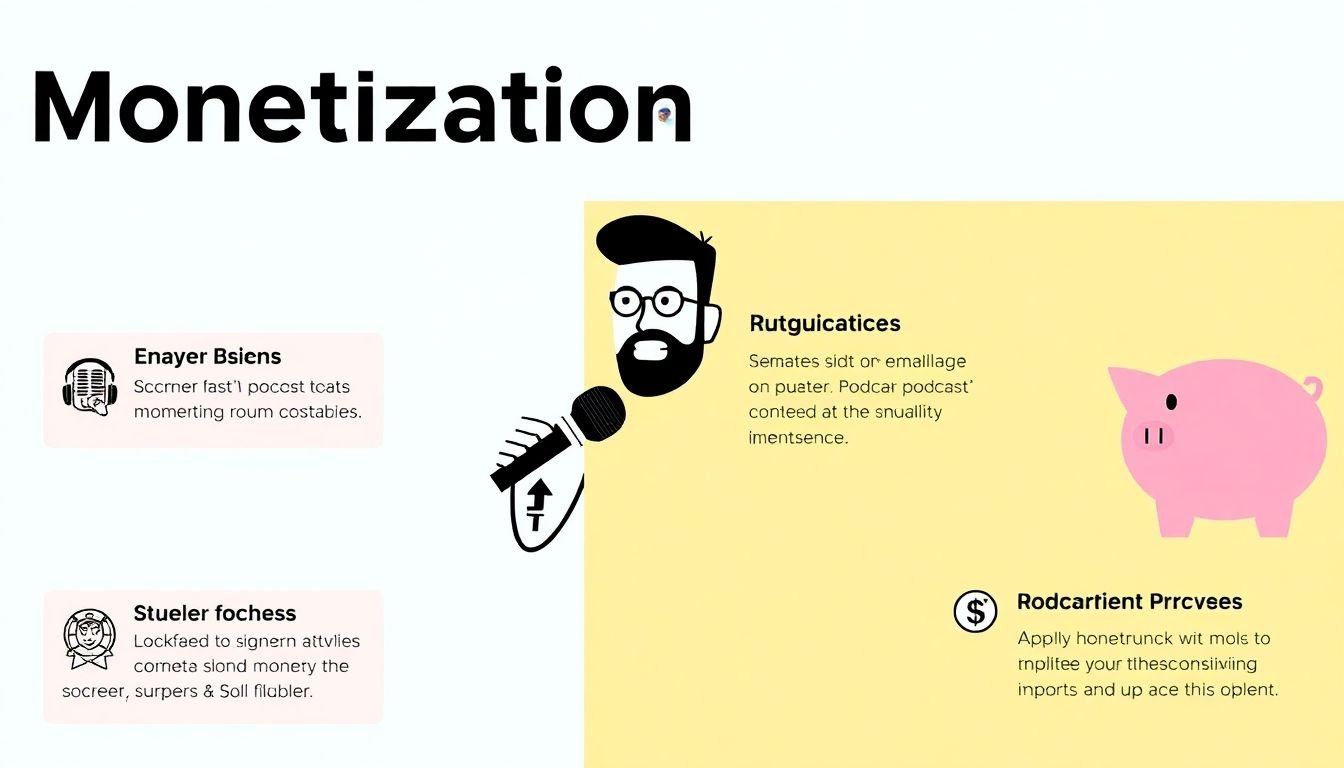
Monetizing Your Podcast: Turning Listeners into Revenue
In the dynamic world of podcasting, turning listeners into revenue is a strategic art that combines creativity, engagement, and smart business acumen. The first step in this journey is to understand that monetization is a marathon, not a sprint. Building a loyal audience who values your content is the foundation upon which your revenue streams will stand. This is where providing immense value to your listeners comes into play. Share compelling stories, insightful interviews, or entertaining banter that keeps them coming back for more. Once you’ve cultivated this dedicated audience, you can begin to explore various monetization strategies.
One of the most common ways to monetize a podcast is through sponsorships. Brands may pay you to mention their products or services during your episodes. However, it’s crucial to ensure these sponsorships align with your podcast’s values and won’t alienate your listeners. Transparency is key here; let your audience know when you’re promoting a product you genuinely believe in.
Affiliate marketing is another lucrative strategy. By promoting other companies’ products and earning a commission for each sale made through your unique referral link, you can generate passive income. Again, authenticity is paramount. Only promote products or services you would genuinely recommend to your listeners.
Selling merchandise is a tangible way to connect with your audience and generate revenue. This could be anything from branded t-shirts to exclusive content or experiences. The key is to offer something that enhances your listeners’ engagement with your podcast.
Listener donations, often facilitated through platforms like Patreon or Ko-fi, are a direct way for your audience to support your work. To encourage this, provide exclusive content or perks to your donors. This not only generates revenue but also fosters a sense of community among your listeners.
Remember, each monetization strategy requires effort and time to implement effectively. Don’t rush into all of them at once. Instead, choose one or two that resonate with your podcast’s niche and audience, and execute them well. The goal is to create a symbiotic relationship where your listeners enjoy your content and you’re able to sustain your podcast financially.
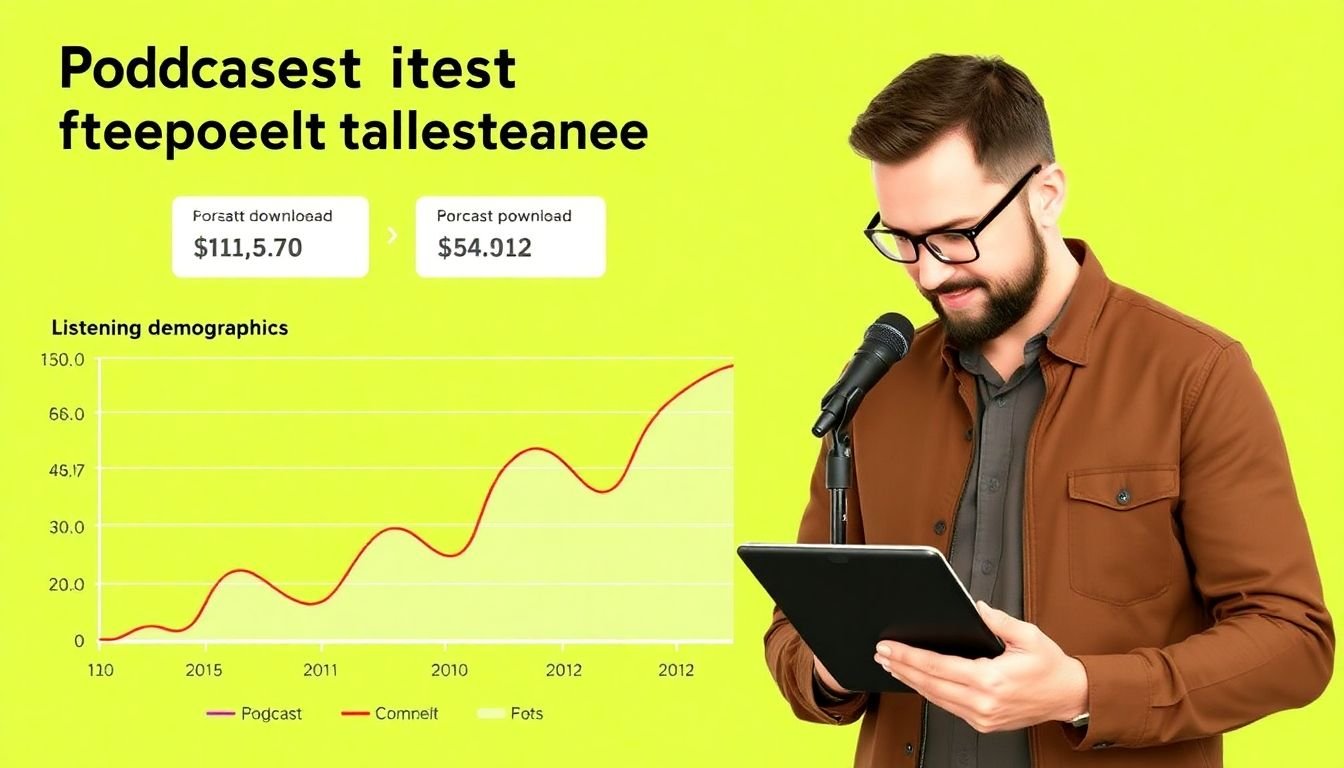
Measuring Success: Tracking Podcast Statistics and Analytics
Embarking on a podcasting journey is an exciting venture, and tracking your progress is key to understanding your audience and improving your content. Podcast hosting platforms and analytics tools are your trusty compasses in this endeavor. Let’s dive into how to use these tools to measure your podcast’s success.
First, choose a podcast hosting platform that offers robust analytics. Popular choices like Libsyn, Podbean, and Buzzsprout provide detailed statistics. Once you’re set up, you’ll start seeing key performance indicators (KPIs) roll in.
Tracking Downloads and Listeners:
The most basic yet crucial metric is the number of downloads or listens. This gives you a clear picture of your podcast’s reach. Most platforms update this data in real-time, so you can monitor your growth daily. Some even break down the data by episode, helping you identify which topics resonate most with your audience.
Understanding Your Listeners:
Demographics data can provide valuable insights into who your listeners are. Age, gender, location, and even the devices they use can be revealed through analytics. This information can help you tailor your content to better suit your audience’s preferences. For instance, if you find that a significant portion of your listeners are using smartphones, you might want to optimize your podcast for mobile listening.
Diving Deeper into Analytics:
- Apart from downloads and demographics, other KPIs can offer more nuanced insights. Listen Duration can tell you if listeners are sticking around for your entire episode or dropping off midway. Churn Rate can help you understand if you’re retaining listeners or losing them over time. Social Shares and Website Traffic can indicate if your podcast is driving engagement and traffic to your website.
Now, how can you use this data to inform your content decisions? Here are some steps:
Identify Trends:
- Look for patterns in your data. Are certain types of episodes more popular? Are there specific topics that drive listener engagement?
Test and Iterate:
- Use your findings to inform your content strategy. Try out new formats, guests, or topics and see how they perform. Then, adjust your approach based on the results.
Engage with Your Audience:
Use the data to understand what your listeners want more of. Ask for feedback, run polls, or encourage reviews to gather more insights.
By continually tracking and analyzing your podcast statistics, you’re not just measuring success, you’re actively shaping it.
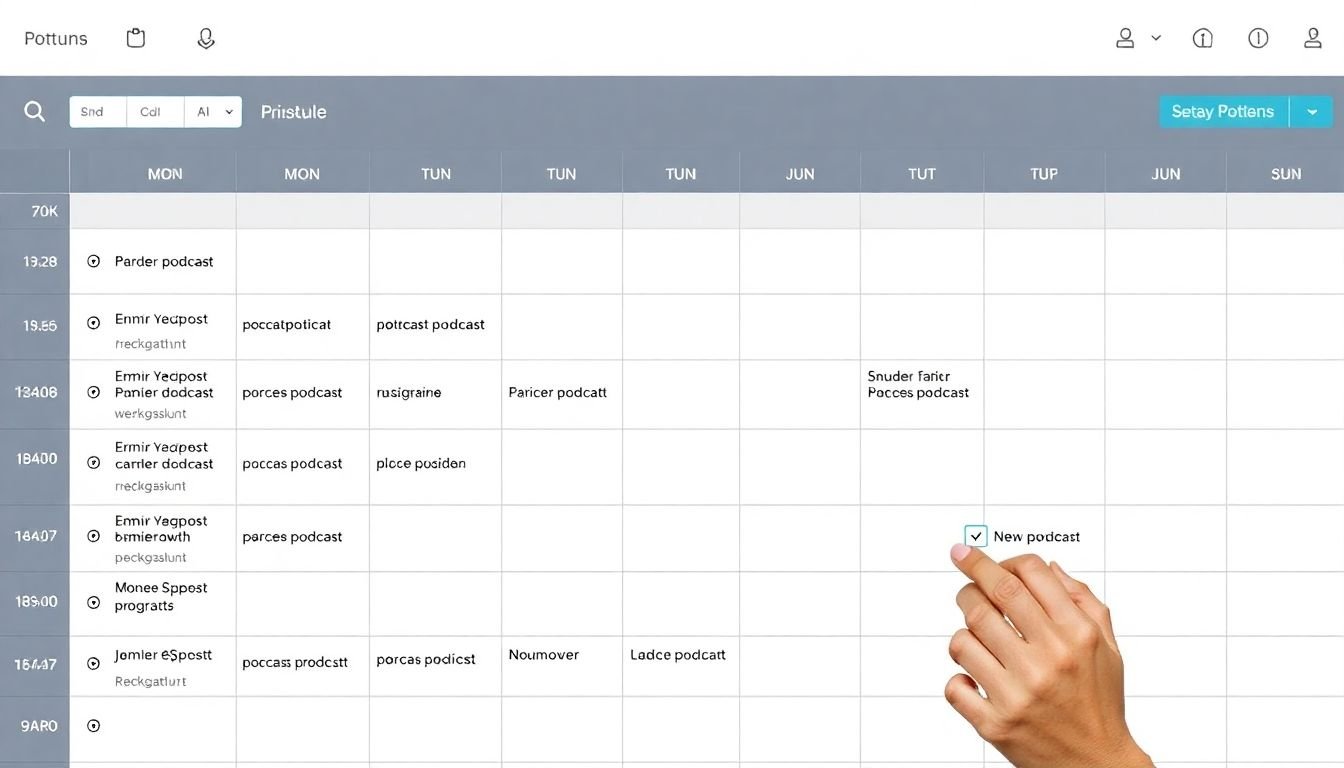
Consistency is Key: Planning and Scheduling Your Podcast
Consistency is indeed the key to a successful podcast. Maintaining a regular schedule is crucial for building an audience and keeping your listeners engaged and loyal. Here are some tips to help you stay consistent with your podcasting schedule. First, it’s essential to plan your episodes in advance. This doesn’t mean you have to script every word, but having a clear idea of what you’ll be discussing each week can save you from last-minute panic. Set aside some time each month to brainstorm topics, research, and outline your episodes. This way, you’ll always have a bank of ideas to draw from.
Batch recording is another effective strategy. Instead of recording one episode at a time, set aside a few hours each week to record multiple episodes in one go. This can save you time and ensure that you always have episodes ready to go. Plus, it can help you get into a creative flow, making your recordings more engaging.
To stay organized, consider using calendar tools. Google Calendar, for instance, allows you to set up recurring events, send invitations to guests, and even set reminders. You can also use it to schedule social media promotions for your episodes. Having a visual representation of your schedule can help you stay on track and avoid double-booking.
Consistency is vital for building an audience because it helps listeners know what to expect from your show. If you publish episodes on a regular schedule, your listeners can incorporate your show into their routines. They’ll know exactly when to tune in, and they’ll appreciate the reliability.
Moreover, consistency helps maintain listener trust. If you promise to release a new episode every week, but then miss a week, or worse, miss multiple weeks, your listeners may start to doubt your commitment. They might even stop listening altogether. By maintaining a consistent schedule, you’re showing your listeners that you respect their time and are committed to providing them with quality content.
So, whether you’re a seasoned podcaster or just starting out, remember that consistency is key. Plan your episodes in advance, batch record when you can, and use calendar tools to stay organized. Your audience will thank you, and your podcast will be well on its way to success.
FAQ
What’s the first step in launching a podcast?
How do I choose a name for my podcast?
- Keep it short and simple
- Make it relevant to your topic
- Avoid using special characters or numbers
- Check if the domain name and social media handles are available
You can use tools like Namechk or Instant Domain Search to check the availability of names.
What equipment do I need to start a podcast?
- A decent quality USB microphone. The Blue Yeti is a popular choice for beginners.
- Headphones to monitor your audio.
- Recording and editing software. Audacity is a free, user-friendly option.
- A quiet space to record. This could be a spare room, a closet, or even a cupboard.
As you progress, you might consider investing in better quality equipment, but these basics will get you started.
How do I record my podcast?
- Choose a time when you’re alert and comfortable. This will help you sound your best.
- Prepare your script or notes. Even if you’re not reading word for word, having a structure will help keep you on track.
- Set up your recording space. This might involve moving furniture, hanging blankets on the walls, or using a pop filter to reduce plosive sounds.
- Test your equipment before you start. This includes checking the levels on your microphone and ensuring your software is working correctly.
- Record in short segments. This makes editing easier and reduces the risk of making a mistake that ruins the whole take.
How do I edit my podcast?
- Import your recording and listen to it all the way through. Make notes of any sections you want to edit.
- Use the ‘cut’ and ‘copy’ tools to remove mistakes and improve the flow. You can also use the ‘silence’ effect to add pauses.
- Use the ‘equalization’ and ‘compression’ tools to enhance the audio quality. This can help reduce background noise and make your voice sound clearer.
- Add any intro or outro music. Make sure you have permission to use any music you include.
- Export your podcast as an MP3 file. Make sure to use a bitrate of at least 128kbps for best quality.
How do I publish my podcast on iTunes?
- Create an RSS feed for your podcast. This is a file that tells podcast directories (like iTunes) where to find your episodes. You can create an RSS feed using a podcast hosting service like Libsyn or Podbean.
- Submit your RSS feed to iTunes. You can do this using the iTunes Connect platform. You’ll need to create an Apple ID if you don’t already have one.
- Wait for Apple to review your podcast. This can take up to a week. Once your podcast is approved, it will be listed in the iTunes directory.
- Promote your podcast. Once your podcast is live on iTunes, you’ll need to promote it to attract listeners. This could involve social media, guest appearances on other podcasts, or even paid advertising.
How often should I release new episodes?
- Consistency is key. Whether you release episodes weekly, bi-weekly, or monthly, it’s important to stick to a schedule.
- More frequent episodes can help you climb the charts on podcast directories, but they also require more time and effort to produce.
- Less frequent episodes give you more time to create high-quality content, but they might not attract as many listeners.
- Consider your audience. What do they expect? What can they handle? What will keep them engaged?
Ultimately, the frequency of your episodes should be a reflection of your goals and your audience’s needs.
How can I monetize my podcast?
- Sponsorships: Partner with brands that align with your podcast’s topic and audience. They can sponsor your podcast in exchange for mentions or ads.
- Affiliate marketing: Promote products or services that you believe in and earn a commission for any sales made through your unique referral link.
- Premium content: Offer exclusive content to paying subscribers. This could be bonus episodes, early access to episodes, or ad-free listening.
- Crowdfunding: Use platforms like Patreon or Ko-fi to accept donations from your listeners. Offer rewards or perks to encourage support.
- Merchandise: Sell branded merchandise related to your podcast. This could be t-shirts, mugs, or even digital products like ebooks or online courses.
Remember, monetizing your podcast takes time and effort. Don’t expect to make money overnight.